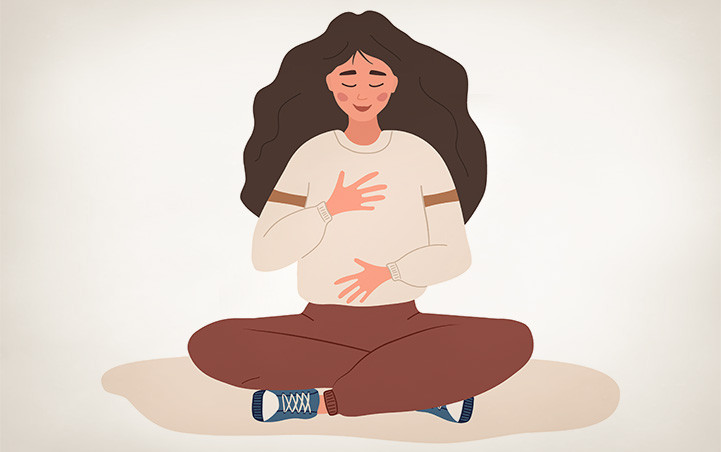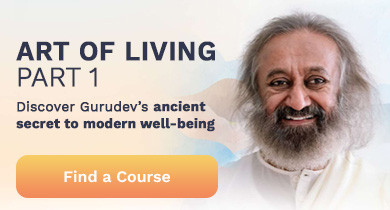
When you think about the basic essentials in life, a few things probably pop into your mind.
Shelter... But you could go without shelter for quite a while if you had to (think Tom Hanks in Castaway).
Food... Pretty important, but we know people have lasted more than 40 days without food in extreme situations.
Water... Ok, now we're getting down to the nitty-gritty. As a rule of thumb, humans can survive about three days without H2O.
And finally... Drumroll, please...
Air... Breath is life, and without air, you'd be a goner in a matter of minutes.
When breath is this important, it should come as no surprise that proper breathing can be the difference between a great life and a miserable one.
Unfortunately, more and more people are breathing poorly these days. And a habitual breathing pattern called chest breathing is one of the main culprits.
If you are suffering from shortness of breath or other breathing issues, read on to learn how you can breathe properly and improve your quality of life.
What is chest breathing?
Chest breathing, also called shallow breathing, thoracic breathing, or costal breathing is the drawing of minimal breath into the lungs using the muscles in the upper chest and rib cage (intercostal muscles) instead of the diaphragm.
Many conditions can be caused by chest breathing or inversely can cause chest breathing. They include:
- Anxiety Disorders
- Asthma
- Hyperventilation
- Hypoventilation
- Pneumonia
- Pulmonary Edema
- Shock
- Stress
- Chronic Obstructive Pulmonary Disease
- High blood pressure
The link between chest breathing and chronic obstructive pulmonary disease
Shortness of breath, wheezing, difficulty breathing, and chest tightness are all common symptoms of COPD. If you suffer from chest pain or tightness you may feel like it's hard to draw a full breath, and over time this can cause you to become a chest breather. This makes it hard to let blood carry oxygen to the organs that need it and causes all sorts of health problems.
But the good news is this process is reversible in most cases. Read on to learn some amazing breathing exercises that can have your breathing easier in no time!
Diaphragmatic breathing exercises
Diaphragmatic breathing or abdominal breathing (also called belly breathing) is a breathing exercise that involves consciously engaging the respiratory muscles, abdominal muscles, and diaphragm when breathing in order to take deeper breaths.
This means actively pulling the diaphragm down with each inward breath so the diaphragm contracts. While practicing this technique, you will notice your belly rising and falling. You will also feel an expanding or stretching sensation in the abdomen, rather than solely in their chest and shoulders. In this way, diaphragmatic breathing helps the lungs fill more efficiently.
How to perform diaphragmatic breathing
Below is the basic step-by-step process to practice diaphragmatic breathing. As a beginner, you may try this first in a lying-down position.
Sit or lie down straight on a comfortable, flat surface. If there is any strain in your back, keep your knees bent. Relax your body.
- Relax your shoulders, head, and neck by gently rolling them a couple of times.
- Put one hand on your upper chest and the other hand on your belly.
- Take a long, full, easy breath in through your nose and fill your lungs up completely.
- As the lungs get fully filled, the diaphragm moves down, expanding your abdomen and sides of the waist. Your chest remains relatively still. Your hand on your belly gently rises.
- Exhale slowly through pursed lips (as if your lips are holding a straw in your mouth) for the count of four or six. Feel the abdomen narrowing and gently getting pulled towards your spine. The hand that is resting on your belly will gently come back to its original position.
- Repeat these steps 10-15 times for the best results.
With regular practice of diaphragmatic breathing, most people can rid themselves of chest breathing, so they can breathe better, and live happier, more fulfilling lives!
Beyond breathing exercises
Now that you see what a profound impact breathing exercises and breathing patterns can have on your physical health, I want to share another breathing technique that absolutely transformed my life.
When I learned and began practicing SKY Breath Meditation I noticed immediate benefits to my physical, mental, and emotional health. SKY has been widely studied, and more than 100 independent peer-reviewed studies have shown that it:
- Improves blood pressure
- Reduces stress, anxiety, and depression
- Increases lung capacity
- Strengthens mental clarity and focus
- Allows for a deeper, more rejuvenating sleep
- Improves symptoms of PTSD
- Increases overall life satisfaction
If someone had told me before I started practicing SKY that a simple 15-minute breathing exercise could increase my life satisfaction, I wouldn't have believed them. But now I've experienced it for myself and I can attest. It's 100% true.
If you'd like to experience the power of this amazing technique for yourself, just click the image below for a FREE live intro led by an expert instructor.
Take this first step for your health and happiness, and watch how your life can blossom!




























